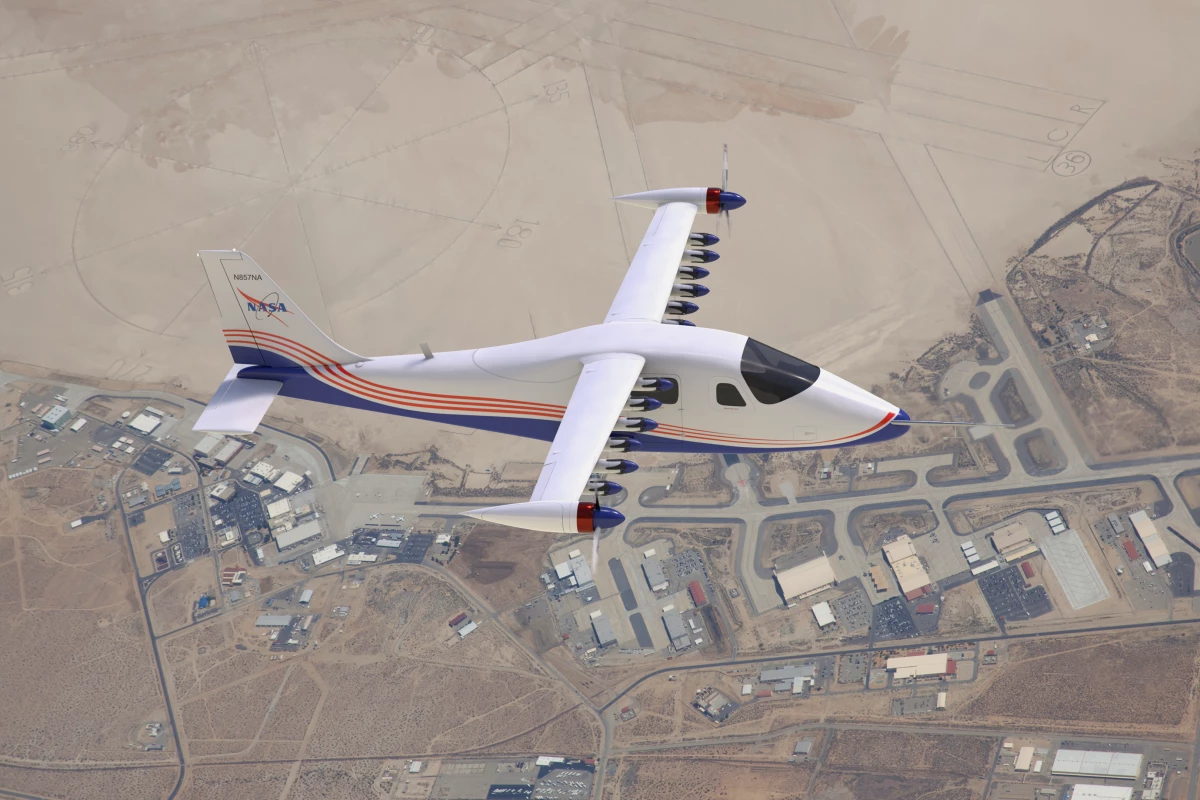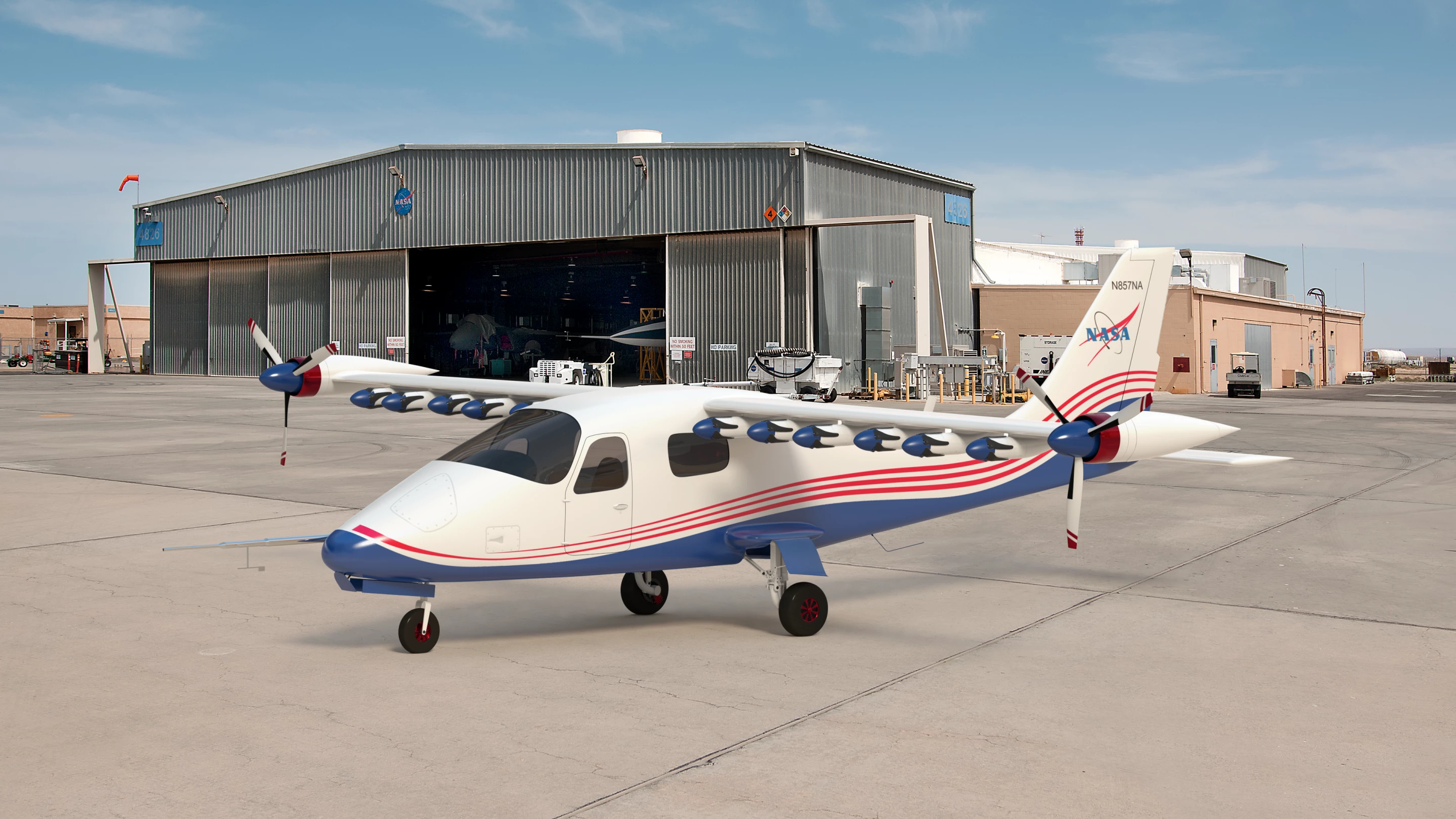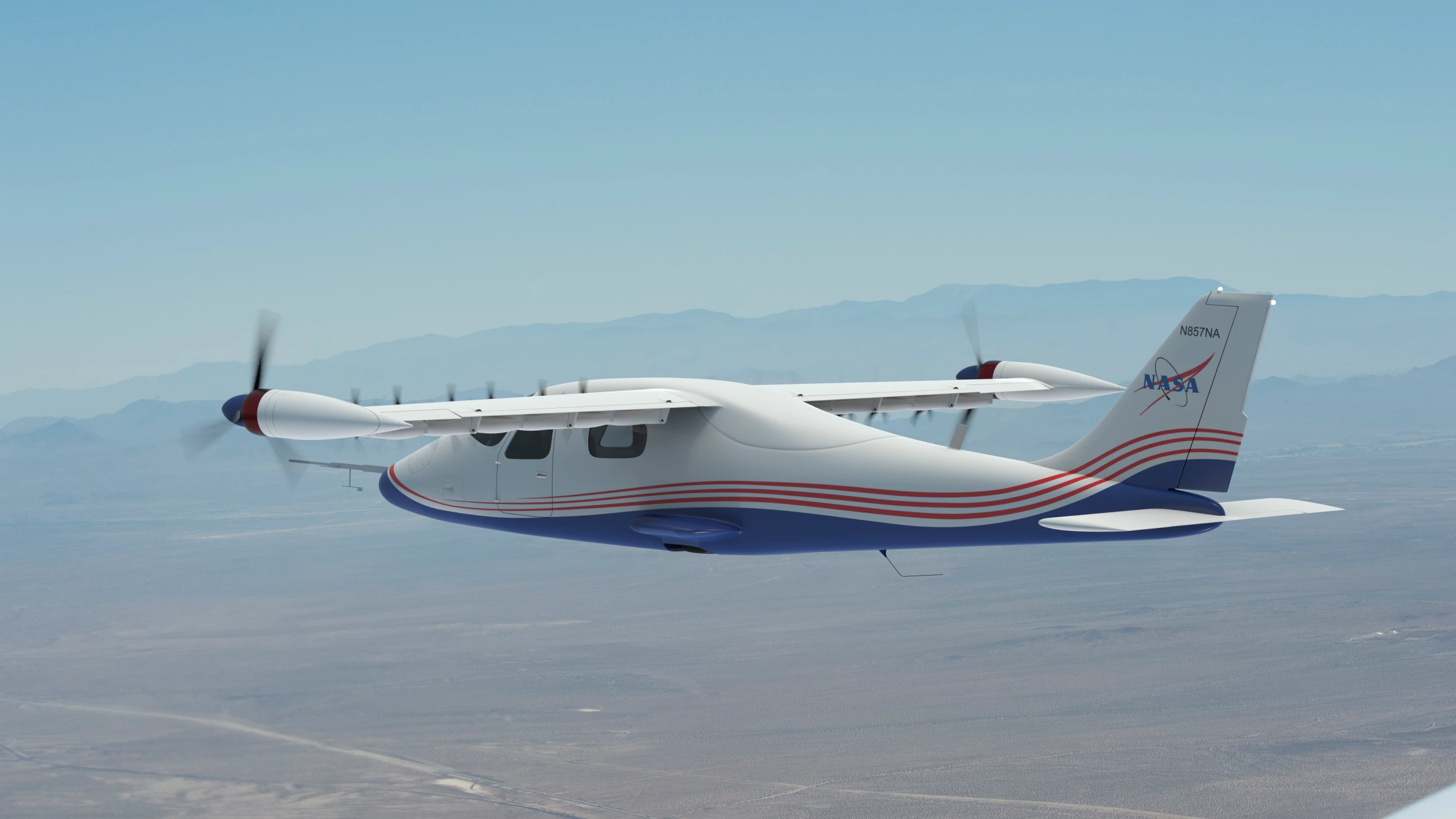NASA has released three concept art images showing its X-57 Maxwell all-electric X-plane in its final configuration. The first manned X-plane from NASA in two decades, the X-57 is shown in its Modification iV (Mod IV) form, which includes a high-aspect-ratio wing and 5-ft (1.5-m) diameter wingtip propellers to recover energy from wingtip vortices.
Designed to help develop certification standards that can be applied to electric aircraft as they come onto the market, the X-57 began as a four-seater Tecnam P2006T conventional light aircraft that had its twin Rotax 912S3 four-cylinder piston engines replaced by 12 electric motor nacelles with individual propellers, plus two larger propellers on the wingtips.
According to the space agency, this final configuration with its bespoke skinny wings will boost efficiency by reducing drag in flight. Propulsion for takeoff and landing is provided by the 12 high-lift electric motors on the leading edge of the wing that allow the X-57 to reach cruising altitude. Then the two wingtip propellers take over as the smaller motors deactivate and their propellor blades fold into the nacelles to reduce drag. For landing, the motors reactivate and centrifugal force opens the blades again.
When it is fully developed, the X-57 could improve flight efficiency by 500 percent when cruising at high speed while generating no in-flight emissions and much less noise than conventional aircraft.
The features of the X-57 are discussed in the video below.
Source: NASA







